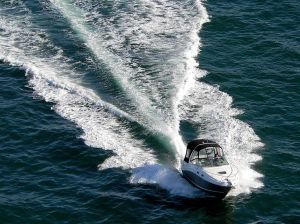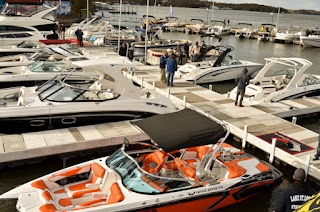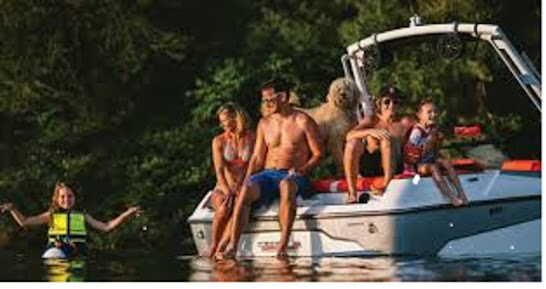Boat Wakes Terror or a Thrill
Wakes are part of the boating experience. They can be a enhancement for wake boarders, and a thrill ride for wave runners. Others will look at wakes as the terror of the lake, cause by large boats, damaging docks and property.
What is a Boat Wake?
A wake, of course, is the wave a boat creates underway as it displaces water. Whether you're on your way to a fishing spot, just cruising or heading in from the action, you could be endangered by another boat's wake, and you might even put another boat in peril by your own wake.
What causes a boat wake?
The wake is the region of disturbed flow (often turbulent) downstream of a solid body moving through a fluid, caused by the flow of the fluid around the body.
What boat is responsible for wakes?
There is many types of boats with various hull types.
All boats have the potential to create a wake if operated incorrectly. One common mistaken idea about wakes is that we
sometimes equate wake size with boat speed. In other
words, if you’re moving along at 30 mph, you have to be
creating a huge wake. This notion isn’t always true because a craft’s weight, size, hull design and hull displacement determine its wake characteristics.
For example, when some boats plane at high speed, they
barely touch the water’s surface. These boats create a small wake at high speeds. But a large boat, perhaps with a heavy
high-horsepower engine whose stern rides low in the water while the bow angles upward, could create a damaging
wake even at slower speeds.
Damage done by wakes
Congested areas are the
most hazardous for creating and receiving wake damage. In fact, one or two boats
are rarely involved in wake
problems. When four or
five boats are under way in
the same direction, either in
the same path or in different
places, you often don’t see an
oncoming wake, and some
wakes combine their forces to
do damage.
Another problem area is sea walls. The walls act
as mirrors for wakes, creating
multiple high-frequency surges and cross-chops that have
no lessening in their strength.
Add tricky currents and the
area could be even more dangerous. Docks, moored boats, and shorelines in these areas can be damaged by strong wakes.
Boat wakes causes erosion and is expensive. Wakes wash away thousands of dollars worth of land. It buries and kills fish eggs, plants, and disturbs waterfowl nest.
With all that said, wakes can be managed. Here at Lake of the Ozarks there are no wake zones and restricted or limited no wake zones. Example is the 0 mile marker to the 1.5 mile marker of the Grand Glaze.
Other restrictions or limited no wake areas are 100 feet within a dock. A brand-new limitation beginning at the 9.5 Mile Marker of the Big Niangua Arm prohibits boats 40 feet and longer from creating a wake anywhere upstream of the 9.5 Mile Marker to the popular Ha Ha Tonka Cove (15 Mile Marker). Limited No-Wake” coves are coves that are 800 feet across ( measured from dock to dock) boats that are 40 feet and longer are restricted from making a wake. These areas are marked with buoys and signage.
Another way to manage wakes is the boater them self. Learn to navigate and how to cross a wake.
Crossing Wakes
Remember distance is your friend. Delay crossing if possible by moving away to encounter smaller wake. The further away you are from another boats wake you are giving time for that wake to dissipate.
Reduce speed to approx..3300 rpm's. Approach wake at a 45 degree angle. Your bow should be raised or elevated, this will help cushion the boat and yourself while crossing the wave and reduces the chance of driving the bow into the wave or second waves.
The will also reduce the rolling action as you go over the wake. if done correctly your boat will have a small porpoise / rolling action.
At no time do not reduce speed or stop the boat you must maintain enough momentum to maintain steerage. if you do reduce speed you run the chance of driving the bow in to the wave and swamping the boat.
Be alert keep you head on a swivel. Drive defensively.






Comments
Post a Comment